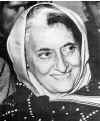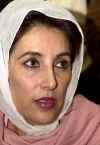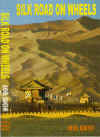|
Issue 4 / 2001
New!
Databank! Basic Comparative Data on south Asian countries
Highlights of April issue
The
Parsi Community of India



Parsis are Zoroastrians who arrived in India 1200 years ago
from Persia. They were fleeing persecution at the hands of Arab conquerors
invading Persia. They landed in Diu, off the coast of Gujarat in India,
carrying nothing but a holy flame from their Temple they had left behind.
That was 1200 years ago.The contribution of this
dynamic Indian community in all spheres of Indian life – arts, sciences,
politics, business, and foremost of all – in social commitment and
philanthropy - has been phenomenal. Despite their meagre numbers, the Parsi community did not seek
any special privileges under the Constitution, and yet played a large role in
the development of the country. Jamsetji Tata, JRD Tata, Godrejs, Wadias,
Dr. Homi Bhabha, Zubin Mehta, Retd. Field Marshal Sam Maneckshaw, Admiral
Jal Cursetji, Air Marshal Engineer, are all from this very distinguished
community. Indira Gandhi married into the community and so did Mohammad Ali
Jinnah's daughter, Dina Wadia. South
Asian Women Leaders
- "accident of gender" or "accident of birth"



 Unlike women leaders and
Prime Ministers elsewhere, the existing south Asian pantheon of women
leaders has not risen from the political ranks, nor have they had any work
experience in any sector of the economy. All, with the exception of Indira
Gandhi, were inexperienced as politicians and some were homemakers and
mothers. Yet they have been Prime Ministers and President. They were fast
learners though. South Asian women need to change this record of political
inheritance. There are among them, many who are talented and politically
gifted to enter the political arena on their own merit. Music
of Pakistan - The Story of Five Decades


 Pakistani
film music, qawwalis, and ghazals have enjoyed a robust period
for the last 50 years. Classical music, however, had to fight for its
survival. The last 50 years have also been the era of folk music. More
recently, pop music has blended folk themes with western pop themes.
Noorjehan, Nusrat Fateh Ali, Mehdi Hasan, Pathaney Khan, Talwandi Gharana of
dhrupad, and Junoon - all have a major following. Pakistani
film music, qawwalis, and ghazals have enjoyed a robust period
for the last 50 years. Classical music, however, had to fight for its
survival. The last 50 years have also been the era of folk music. More
recently, pop music has blended folk themes with western pop themes.
Noorjehan, Nusrat Fateh Ali, Mehdi Hasan, Pathaney Khan, Talwandi Gharana of
dhrupad, and Junoon - all have a major following.
Sufis
- Wisdom against Violence
Sufis, escaping violence and
persecution in west and central Asia, came to India , settled there
and wrote of love. Baba Farid, Bulleh Shah, Madho Lal Hussain, Kaki,
Moinuddin Chishti and many more belonged to different Sufi orders - but the
essence of their teachings was the same - universal tolerance. Their
writings are alive with themes of love, peace, reflection, generosity and
faith - in simple peasant metaphors.
'Crouching
Tigers, Hidden Dangers'
The Royal Bengal Tiger's last roar
 Tiger,
the arrogant and proud king of the jungle, whose realm was unchallenged even
by the likes of Alexander, Changez Khan and Tamur Lane, fell prey, first to
the greed of hunters in quest of ‘trophies’, then to the mercenary
poachers – who traded every organ of the tiger for money, and most
recently to ‘planned development’ encroaching on tiger territory.
A hundred years ago there were over
100,000 tigers – today there are perhaps less than 5,000 – 95% have been
wiped out. Of these 5,000 about 3500 are hiding in India – in scattered
pockets called Reserves - and the remaining in Bangladesh. Tiger,
the arrogant and proud king of the jungle, whose realm was unchallenged even
by the likes of Alexander, Changez Khan and Tamur Lane, fell prey, first to
the greed of hunters in quest of ‘trophies’, then to the mercenary
poachers – who traded every organ of the tiger for money, and most
recently to ‘planned development’ encroaching on tiger territory.
A hundred years ago there were over
100,000 tigers – today there are perhaps less than 5,000 – 95% have been
wiped out. Of these 5,000 about 3500 are hiding in India – in scattered
pockets called Reserves - and the remaining in Bangladesh.
Fast
Foods - The 'E' Cuisine
Fast food is beginning to get tastier
and crisper. The discerning epicures who cultivate the fast food culture pay
out $100 billion for ‘food’ laced and garnished with preservatives,
flavourings, sweeteners and colours of all hues - the tempting French fries
carry no tales of the medium they have been fried in or the flavours and
enhancers that have been added to them. Fast food outlets and chains are
increasing rapidly and so is the incidence of Attention Deficit
Disorder [ADD] and Hyperactivity among children.
Books
 'Parsis
- the Zoroastrians of India' 'Parsis
- the Zoroastrians of India'
by Sooni Taraporevala
 'Silk
Road on Wheels' 'Silk
Road on Wheels'
by Akhil Bakshi
Disclaimer |












